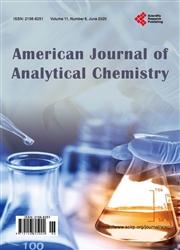Neonatal Cord Tox Panel and Maternal Perinatal Fentanyl Exposure: A Retrospective Chart Review
引用次数: 3
Abstract
Objective: The specific aim of this study was to determine if the currently available cutoff for fentanyl in umbilical cord (UC) was appropriate to distinguish illicit fentanyl exposure from therapeutic in-hospital administration of fentanyl. Study Design: Medical record review was conducted for perinatal administration of fentanyl and the detection of fentanyl in the corresponding routine UC toxicology. Specimens were initially tested with immunoassay followed by mass spectrometry (n = 62). Result: Excluding a single specimen that was confirmed positive, specimens were below the assays’ limit of quantification. The immunoassay’s mean b/b0 for the cases that received and did not receive fentanyl prior to delivery was 91.3% ± 10.6% and 98.2% ± 6.5%, respectively (p = 0.003). Conclusion: We demonstrated that UC is a suitable specimen type for the detection of fentanyl and that the cutoff selected adequately identifies illicit fentanyl use while not flagging cases where fentanyl was administered by the hospital prior to birth.新生儿脐带毒素小组和产妇围产期芬太尼暴露:回顾性图表回顾
目的:本研究的具体目的是确定目前可用的脐带芬太尼(UC)切断是否适合区分非法芬太尼暴露和治疗性院内芬太尼管理。研究设计:对围生期给药芬太尼及相应常规UC毒理学中芬太尼的检测进行病历回顾。采用免疫分析法和质谱法对标本进行初步检测(n = 62)。结果:除1例标本确认阳性外,所有标本均低于测定的定量限。产前接受芬太尼治疗和未接受芬太尼治疗的患者免疫测定的平均b/b0分别为91.3%±10.6%和98.2%±6.5% (p = 0.003)。结论:我们证明UC是检测芬太尼的合适标本类型,并且选择的截止值充分识别非法芬太尼使用,同时不标记出出生前医院使用芬太尼的病例。
本文章由计算机程序翻译,如有差异,请以英文原文为准。
求助全文
约1分钟内获得全文
求助全文

 求助内容:
求助内容: 应助结果提醒方式:
应助结果提醒方式:


